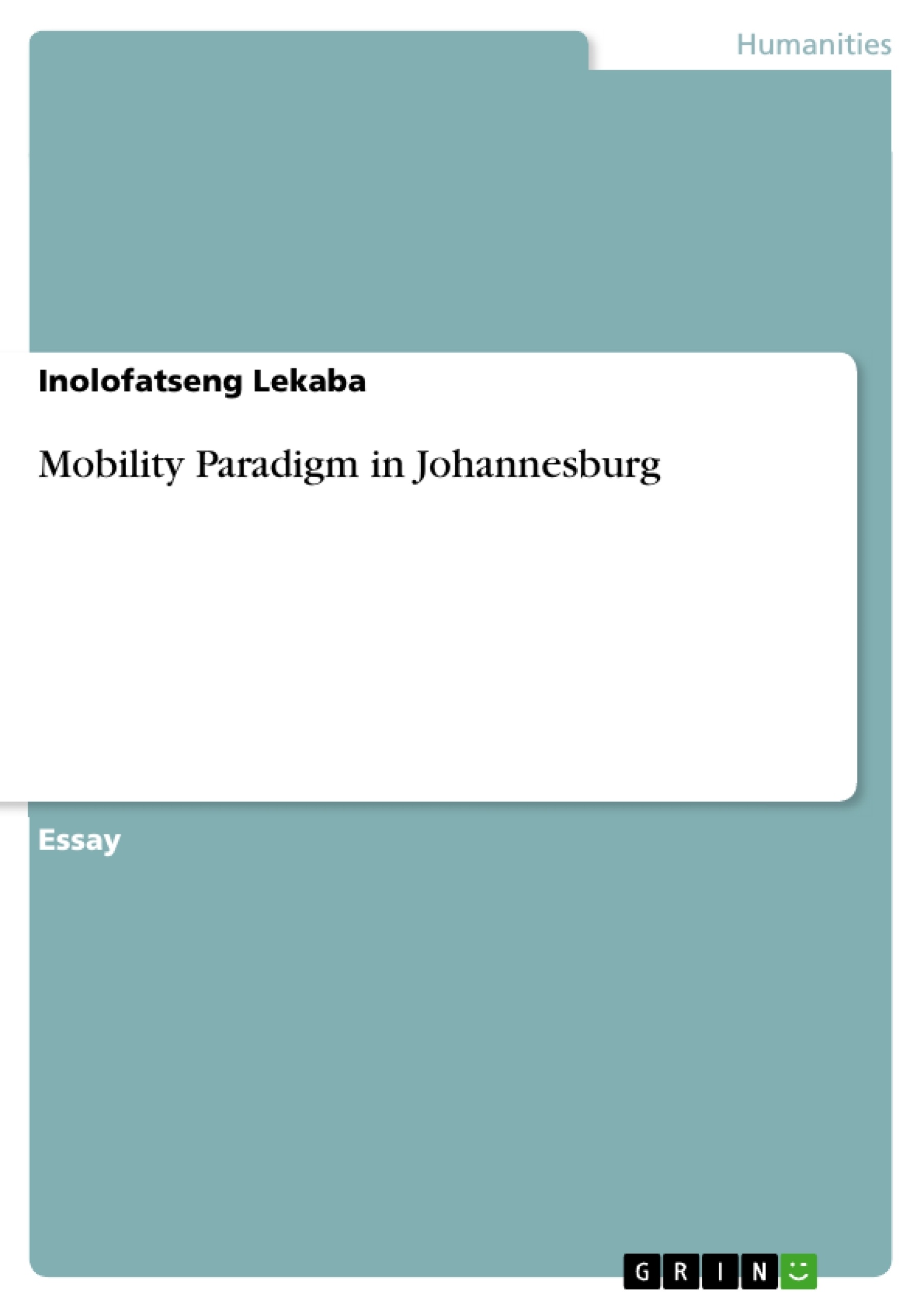Racially shaped mobility patterns in South Africa date back to the colonial and apartheid eras. Apartheid as an oppressive system of social engineering through spatial segregation confined the mobility of black people. The mobility of white people was encouraged and facilitated more so in ‘white’ spaces or those spaces deemed too good for the black majority. The persistence of the apartheid space economy in the post-apartheid city implies that although mobility is no longer restricted by harsh laws, it is limited by economics and politics of the stomach. However, inter and intra-city mobility of black citizens has sharply increased with the dawn of democracy and so has the influx of migrant populations into these postapartheid urban spaces.
Against this backdrop, this essay will illuminate the processes that have influenced the production of post-apartheid Johannesburg. The theoretical framework of this paper is the mobility/fixity theory supported by Lefebvre’s ‘production of space’. The paper seeks to zero in on the two most prominent displays of mobility/fixity in the production of space as it relates to Johannesburg; these are the ‘white flight’ of the 1980s and ‘Africanisation’ of the postapartheid city.
Inhaltsverzeichnis (Table of Contents)
- Introduction
- Mobility/fixity and the production of space
- 'White flight'
- 'World Class African City'
Zielsetzung und Themenschwerpunkte (Objectives and Key Themes)
This essay examines the processes that have shaped the production of post-apartheid Johannesburg, focusing on the concepts of mobility and fixity and how they relate to the spatial transformations of the city. The essay utilizes Lefebvre's "production of space" theory as a theoretical framework.
- The influence of mobility and fixity on the production of space in Johannesburg
- The phenomenon of "white flight" in the 1980s and its impact on the city's spatial economy
- The "Africanisation" of Johannesburg in the post-apartheid era and its consequences for urban space
- The role of migration and xenophobia in shaping the city's social and economic landscape
- The relationship between mobility, power dynamics, and the exclusion of marginalized groups
Zusammenfassung der Kapitel (Chapter Summaries)
- Introduction: The essay introduces the concept of racially shaped mobility patterns in South Africa, highlighting the legacy of apartheid and its impact on spatial segregation. The essay explores how mobility, despite being less restricted by laws in post-apartheid South Africa, remains limited by economic and political factors. It sets the stage for examining the production of post-apartheid Johannesburg, specifically focusing on "white flight" and the "Africanisation" of the city.
- Mobility/fixity and the production of space: This section delves into the theoretical framework of mobility/fixity theory, supported by Lefebvre's "production of space" concept. It explores the interconnectedness of mobility and fixity, highlighting how both influence the organization of space and the restructuring of institutions. The discussion touches upon various aspects of mobility, including physical, virtual, and communicative travel, and its implications for the production of space.
- 'White flight': This chapter examines the spatial transformation of Johannesburg triggered by "white flight" in the late 1970s. The essay analyzes the factors that drove this migration, including the erosion of apartheid's restrictive mobility policies, the influx of black citizens into the inner city, and the desire for white "safe spaces" in the suburbs. It explores the consequences of this migration on the city's space economy and social fabric.
- 'World Class African City': This section examines the "Africanisation" of Johannesburg in the post-apartheid era, focusing on demographic shifts, the influx of African migrants, and the reclaiming of spaces previously occupied by other racial groups. It explores the experiences of migrants, including their residential patterns, challenges, and the impact of xenophobia on their lives. The chapter also investigates how institutional structures contribute to the marginalization and exclusion of migrants in the city.
Schlüsselwörter (Keywords)
This essay explores the concepts of mobility and fixity in relation to the production of space in post-apartheid Johannesburg. The key themes include 'white flight', 'Africanisation', migration, xenophobia, spatial segregation, and the exclusion of marginalized groups. The essay utilizes Lefebvre's "production of space" theory as a theoretical framework to analyze the spatial transformations of the city and the power dynamics that shape mobility patterns.
- Quote paper
- Inolofatseng Lekaba (Author), 2016, Mobility Paradigm in Johannesburg, Munich, GRIN Verlag, https://www.hausarbeiten.de/document/511827


